An Intense Yellow Paired With An Outstanding Orange Tint Ensures This Bird Well And Truly Stands Out On The Forest Peripheries!

A frequently encountered resident in semi-open environments, such as forest peripheries and cultivated areas adorned with trees.
Meet the Golden grosbeak:
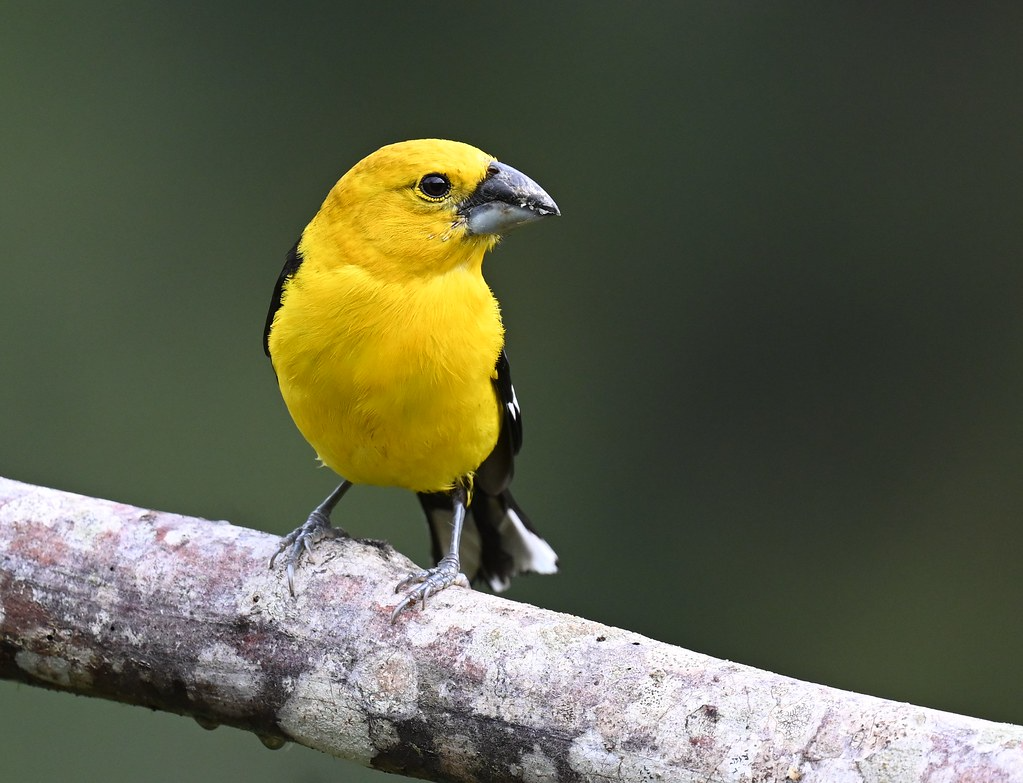
Description: The golden grosbeak (Pheucticus chrysogaster), measures around 21 cm and weighing between 54 to 59 g, the Ventriamarillo Peak exhibits a robust beak with a black upper jaw and bluish-gray lower jaw, dark brown irises, and gray legs. Its head and neck are an intense yellow with an orange tint, while its back is predominantly black. The rump is yellow, with black supratail coverts featuring white tips. The throat and underparts are bright yellow, except for the black thighs and white undertail coverts.
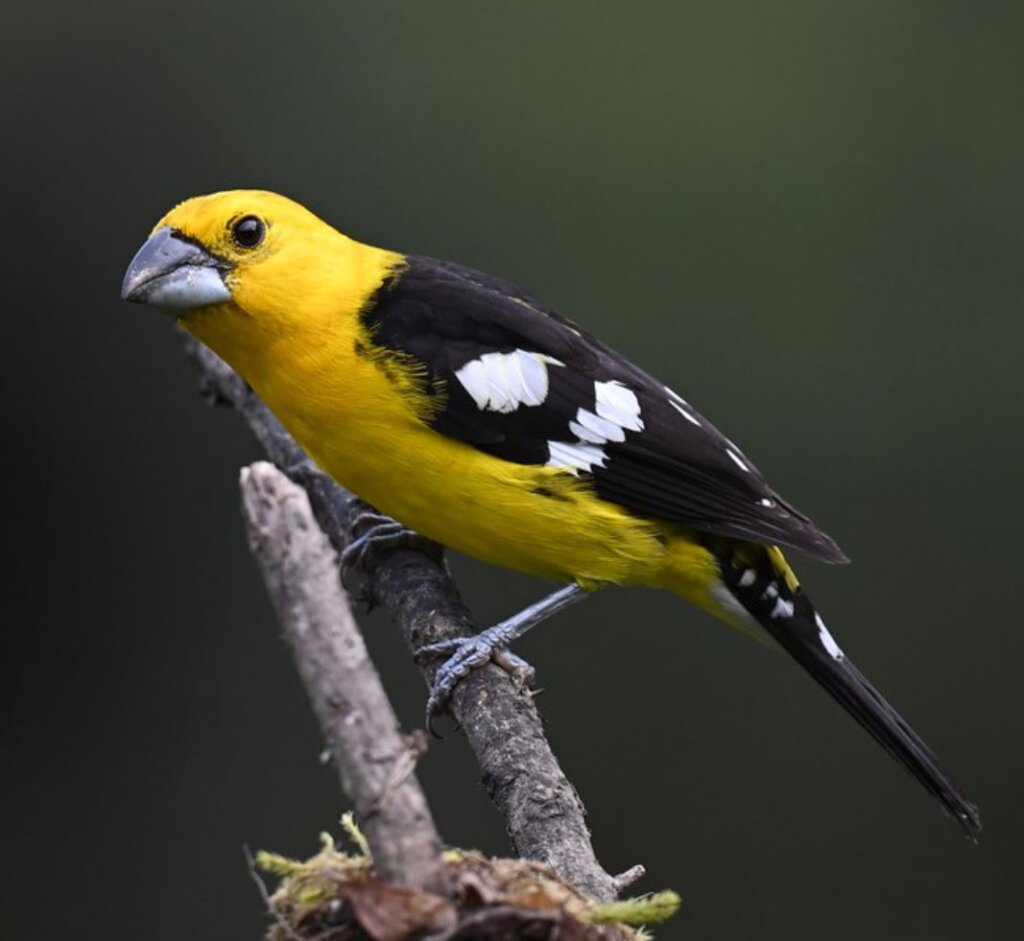
The female, distinguishable by a pale yellow crown streaked with black, displays greenish-yellow upperparts with blackish streaks. Juveniles have black crowns, napes, and ear-coverts.
Related reading:
– A Bird With A Bright Yellow Belly And Face, Offset By Olive-Green Wings And A Head Capped Off With A Jaunty French Beret!
The scientific name “Pheucticus” originates from the Greek term “Pheuktikos,” signifying timid, while the epithet “chrysogaster” translates to golden-bellied, derived from the Greek roots “khrusos” for golden and “gaster” for belly.
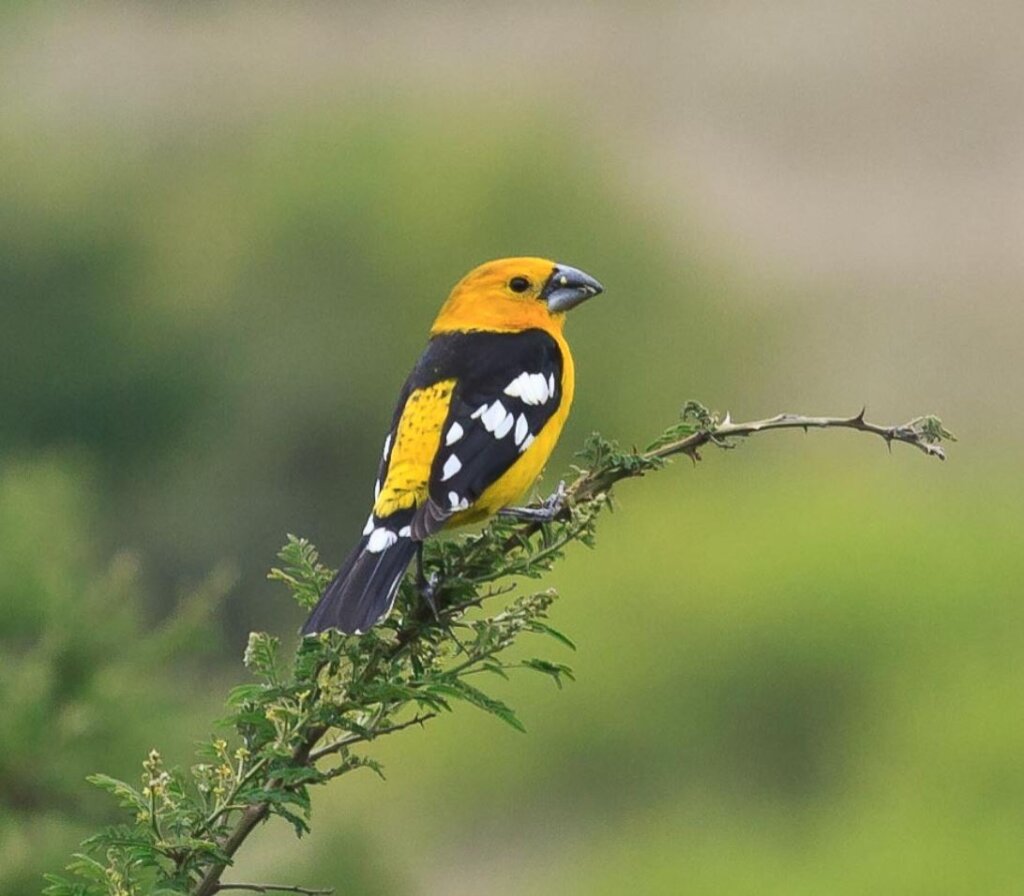
Distribution: The Ventriamarillo Peak spans across Venezuela, Trinidad and Tobago, Colombia, Ecuador, and Peru.
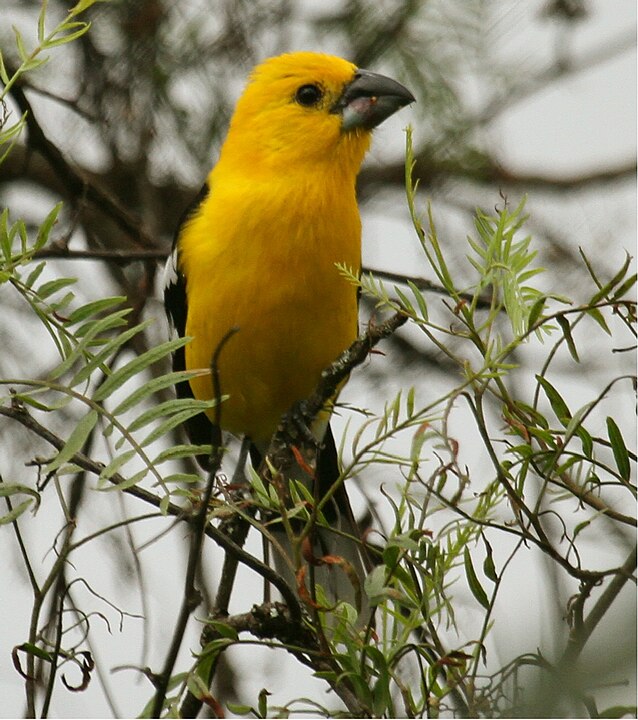
Habitat: In Colombia, it thrives at elevations between 1500 and 2500 meters above sea level in the Sierra Nevada de Santa Marta, Perijá mountain range, and the southwestern Andes in the department of Nariño.
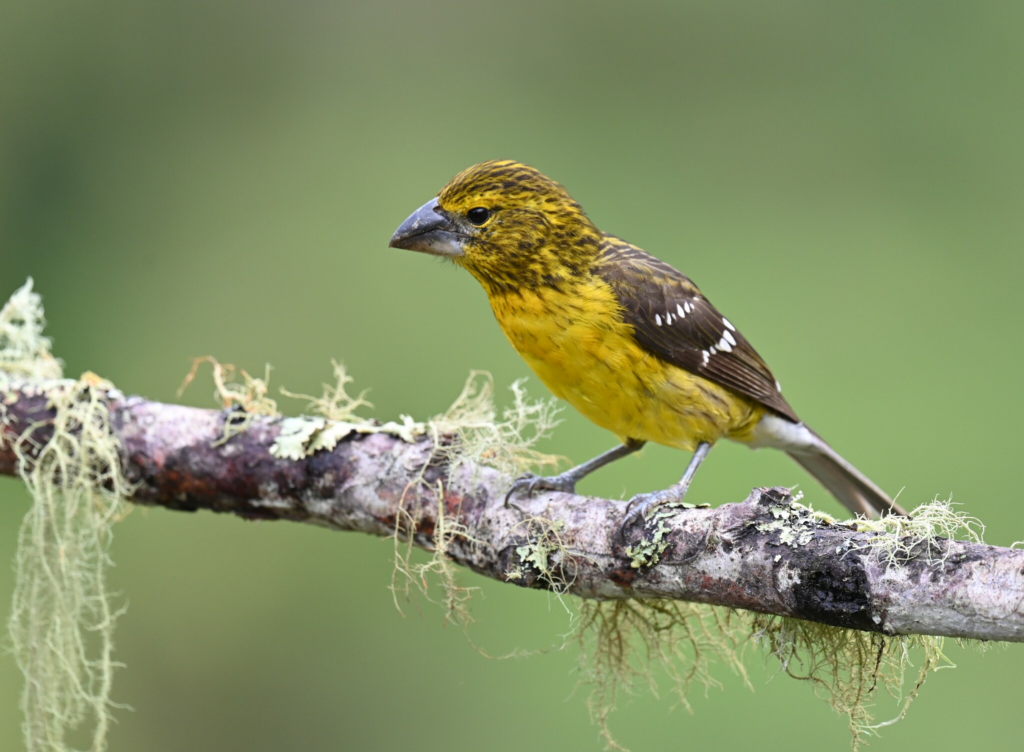
Diet: Its diet consists of seeds, fruits, and shoots. Due to its melodious song and attractive coloring, it is frequently captured for the cage bird market.
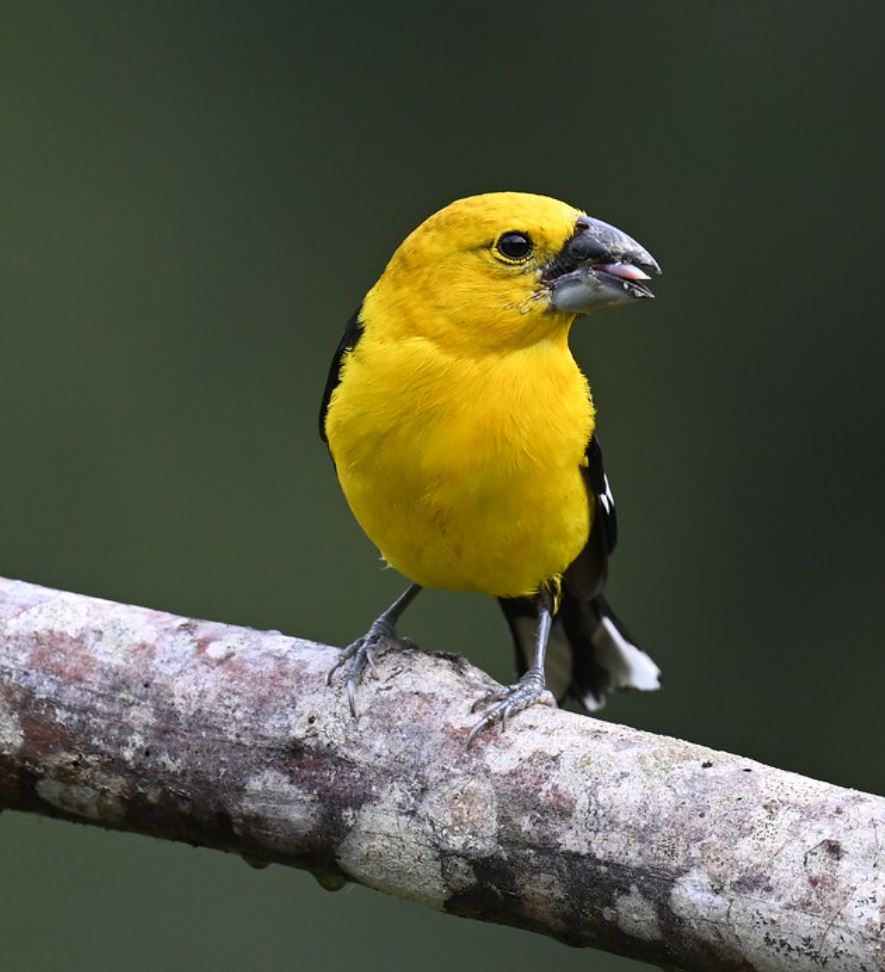
Nesting: The incubation period lasts 4–16 days, with nestlings requiring approximately 11 days before leaving the nest, often taking flight shortly after. These nests are commonly parasitized by the Shiny Cowbird (Molothrus bonariensis).
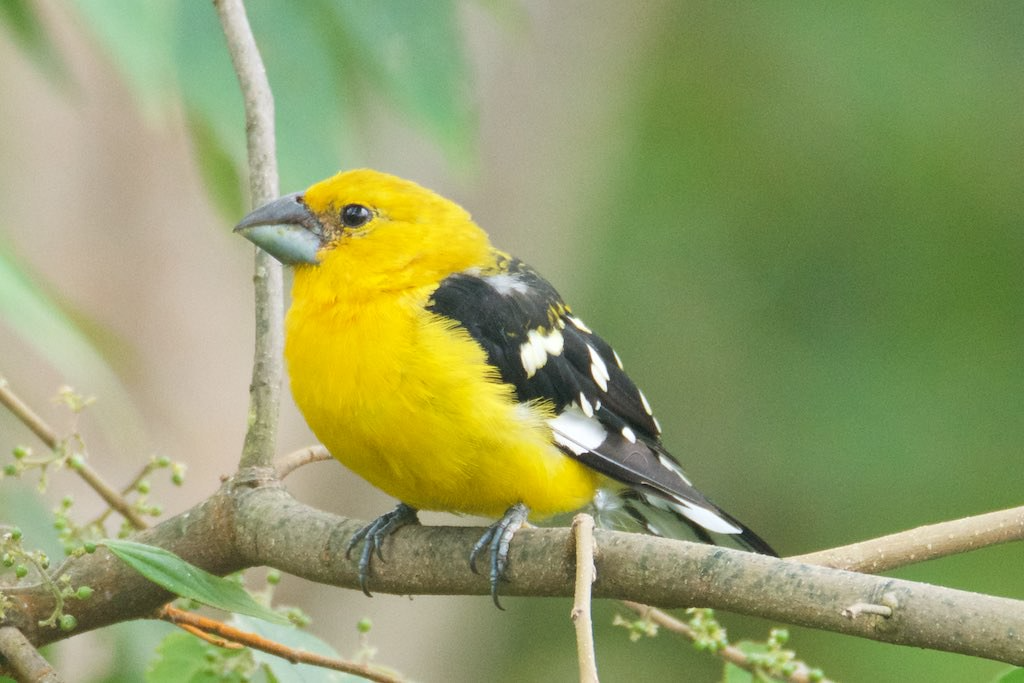
The IUCN categorizes the golden grosbeak as a species of Least Concern. This designation is based on the species’ extensive range and a consistent population size, demonstrating a decline of less than 30% over ten years or three generations.
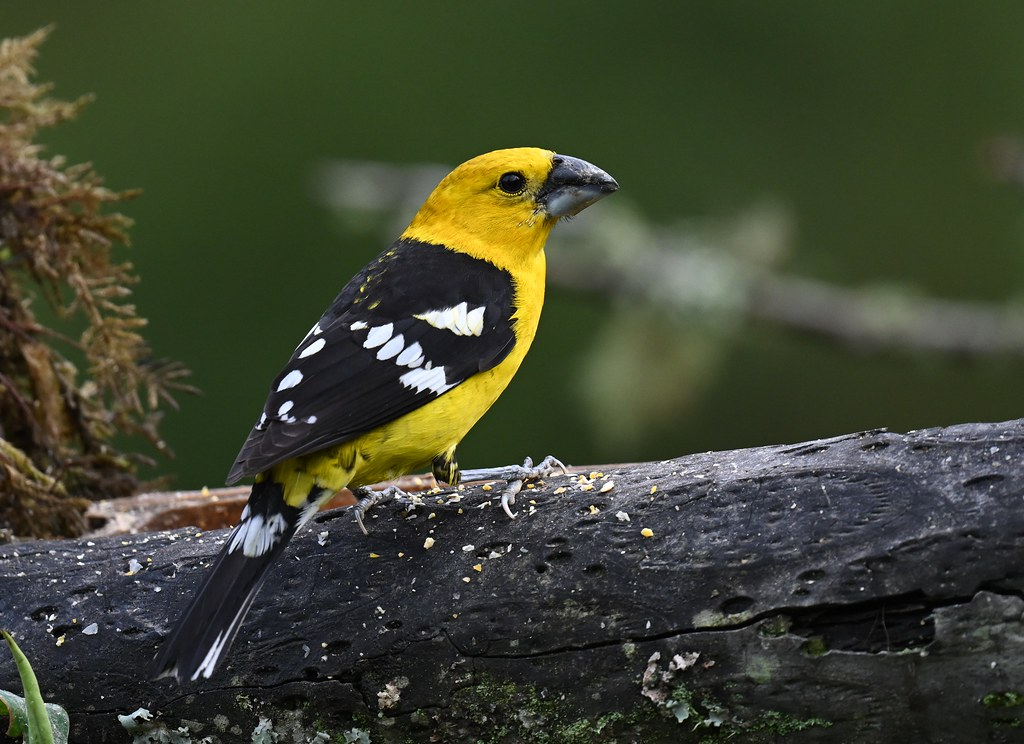
Listen to this bird next:
This article uses material from Wikipedia.org which is licensed under the GNU Free Documentation License via Copyright Wikipedia. Images on this page are the sole property of the photographers (unless marked as Public Domain). Please read the license and or contact the photographers directly before using them for any purpose. Thank you all.
A Canopy Dwelling Bird Who Wears His Burning Flame Colored Crest Of Fire With Pride!
Please SHARE this article with all your bird-loving friends and family.






